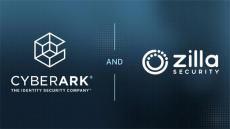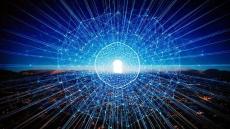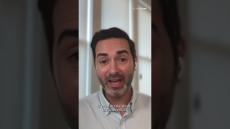|
By Omer Grossman
Technology is rapidly redefining how we live and work. As CIO at CyberArk, I often get asked about the themes and realities shaping today’s tech agenda. Some of them—I’m looking at you, AI—are shiny and hyped, while others are familiar and fundamental yet equally important. Here’s a look at five on the top of my list.
|
By Len Noe
Cybersecurity has been my world for years. I’ve worked hard to build my reputation, moving from the hacker underground to a trusted boardroom expert. I take my role seriously because trust and credibility define success in this field. But I recently discovered that even with all my experience, I wasn’t immune to one of today’s fastest-growing threats—deepfake technology.
|
By Eviatar Gerzi
You might not recognize the term “OAuth,” otherwise known as Open Authorization, but chances are you’ve used it without even realizing it. Every time you log into an app or website using Google, Facebook or another account, OAuth grants that service limited access to your data without sharing your password. OAuth simplifies user authentication across platforms, making it a key part of secure online experiences.
|
By Matt Cohen
This week, we announced an important development in our journey to deliver the industry’s most powerful, comprehensive identity security platform. CyberArk has acquired Zilla Security, a leader in modern Identity Governance and Administration (IGA) solutions, bringing their cutting-edge, AI-powered technology into the fold of our industry-leading platform.
|
By CyberArk
In the inaugural episode of the Security Matters podcast, host David Puner dives into the world of AI security with CyberArk Labs’ Principal Cyber Researcher, Eran Shimony. Discover how FuzzyAI is revolutionizing the protection of large language models (LLMs) by identifying vulnerabilities before attackers can exploit them. Learn about the challenges of securing generative AI and the innovative techniques used to stay ahead of threats.
The introduction of OpenAI’s ‘Operator’ is a game changer for AI-driven automation. Currently designed for consumers, it’s only a matter of time before such web-based AI agents are widely adopted in the workplace. These agents aren’t just chatbots; they replicate human interaction with web applications, executing commands and automating actions that once required manual input.
|
By Brooke Jameson
Developers are incredibly valuable to an organization’s progress and evolution. They must innovate quickly while simultaneously navigating changes to their day-to-day operations as companies heighten security requirements in the cloud. If developers find these security measures cumbersome, creating hurdles that plague their progress, they will likely bypass them altogether.
|
By Kevin Bocek
Imagine a sleek, high-tech sports car racing downhill without brakes. Now, imagine that car is actually the AI driving your business. Powerful yet precariously close to catastrophe. That’s why, as we accelerate AI adoption, including AI agents, we can’t afford to overlook security guardrails. This fact was front and center during the recent “large-scale cyberattack” on DeepSeek, a strategic open-source AI player from China that’s been disrupting the global AI space.
|
By Len Noe
As a former black hat hacker, social engineering and phishing concepts are not new to me. I have used these techniques in my previous life, so I know their effectiveness. Having spent years immersed in the intricacies of social engineering, I’m always looking for new twists on this age-old technique.
|
By Archit Lohokare
In today’s threat landscape, you’re at risk if you don’t have all your identities—human and machine—secured with the right level of intelligent privilege controls. And the risk is even more significant when identities and privileges on your mission-critical Linux servers, especially those that run critical workloads or have sensitive data, are managed in silos, separately from the rest of the infrastructure.
|
By CyberArk
In the inaugural episode of the Security Matters podcast, host David Puner dives into the world of AI security with CyberArk Labs' Principal Cyber Researcher, Eran Shimony. Discover how FuzzyAI is revolutionizing the protection of large language models (LLMs) by identifying vulnerabilities before attackers can exploit them. Learn about the challenges of securing generative AI and the innovative techniques used to stay ahead of threats. Tune in for an insightful discussion on the future of AI security and the importance of safeguarding LLMs.
|
By CyberArk
In this video, learn how to seamlessly integrate Wiz with CyberArk Privilege Cloud to enhance cloud security and streamline privileged account management (PAM).
|
By CyberArk
Discover how CyberArk and Wiz are revolutionizing cloud security! In this exclusive interview with Information Security Media Group, CyberArk Chief Strategy Officer Clarence Hinton and Wiz Vice President of Product Extensibility & Partnerships Oron Noah discuss how their partnership addresses critical cloud challenges: Key Highlights: Watch now to explore how CyberArk and Wiz empower organizations to secure their cloud environments effortlessly!
|
By CyberArk
Discover how CyberArk's transformation into a SaaS company reshaped its business and finance operations. SVP Nili Serr-Reuven shares insights on scaling a SaaS delivery model, the critical role of finance in transformation, and lessons learned along the way. Tune in for expert advice on driving growth and innovation in the SaaS space.
|
By CyberArk
Any user can become privileged in certain conditions. This includes everyday employees using business applications in which they can access - and take actions with - the resources attackers aim to exploit. And whether you're a CIO or a PAM admin, you likely see this evolution of privilege occurring regularly. Protecting your users' identities - from securing authentication to granting, certifying and revoking access - is essential. But it's not easy, as the users and apps requiring protection grow in number and scope. So how can your team rise to this challenge?
|
By CyberArk
With perimeter-focused architectures quickly becoming irrelevant, enterprises are looking toward identity-focused security measures to protect new "perimeterless" networks and new forms of working. Identity Security for Dummies is a primer on securing digital identities across the enterprise. This conversational book is written for technical and business stakeholders alike with plenty of examples, analogies and elements designed to make this security topic more approachable.
|
By CyberArk
Regardless of where enterprises are in their cloud journey, CyberArk's goal is to enable enterprises to protect their assets in AWS by providing powerful solutions for securing privileged access at each stage of their journey. Download this white paper to learn how CyberArk Identity Security solutions can be deployed with CyberArk's automation capabilities and used to proactively protect privileged access and detect threats in real-time in AWS environments.
|
By CyberArk
A quick read for actionable tips, technical insight and best practices. Privileged access represents one of the largest security vulnerabilities in today's digital landscape. Privileged accounts, credentials and secrets are everywhere throughout your IT infrastructure: on-premises, across multi-cloud and hybrid environments, in applications, on endpoints and in DevOps pipeline. Most security breaches involve a stolen privileged credential. That's why Privileged Access Management (PAM) is a critical part of any cyber security program.
|
By CyberArk
In January 2023, EU member states formally enacted a revision of the 2016 Network and Information Systems (NIS) Directive. Conceived in response to several widely publicized and damaging cyberattacks, the NIS2 Directive strengthens security requirements, streamlines reporting obligations and introduces more stringent supervisory measures and stricter enforcement requirements. This paper provides a brief introduction to NIS2 and explains how it might affect your business and how you can prepare.
|
By CyberArk
Cloud migration and digital transformation have led to an explosion of non-human identities that need to be secured across multiple cloud and hybrid environments. And more identities mean more secrets that need to be secured, rotated and managed. That's where SaaS-based secrets management can help. In this eBook, you'll learn about: Want to learn more about SaaS-based secrets management? Schedule a meeting to speak to one of our experts today!
- February 2025 (11)
- January 2025 (10)
- December 2024 (15)
- November 2024 (13)
- October 2024 (15)
- September 2024 (14)
- August 2024 (9)
- July 2024 (17)
- June 2024 (19)
- May 2024 (12)
- April 2024 (14)
- March 2024 (11)
- February 2024 (21)
- January 2024 (14)
- December 2023 (13)
- November 2023 (11)
- October 2023 (13)
- September 2023 (9)
- August 2023 (14)
- July 2023 (13)
- June 2023 (15)
- May 2023 (14)
- April 2023 (11)
- March 2023 (13)
- February 2023 (13)
- January 2023 (19)
- November 2022 (1)
- October 2022 (4)
By applying intelligent privilege controls to all identities – human and machine – CyberArk enables secure access to any resource, anywhere, everywhere – with a single Identity Security platform.
Seamlessly secure identities throughout the cycle of accessing any resource across any infrastructure, including hybrid, SaaS and multi-cloud. The CyberArk Identity Security Platform is the first line of defense against malicious actors and unauthorized access to protect what matters most.
Apply Intelligent Privilege Controls Across the Entire Identity Lifecycle:
- Workforce & Customer Access: Ensure that the right users have secure access to the right resources at the right times, by protecting workforce and customer credentials and tightly controlling access to on-premises and cloud-based applications, services and IT infrastructure.
- Endpoint Privilege Security: Take control over unmanaged privilege on the endpoints to significantly reduce the area of attack and defend from threats by removing local admin rights, enforcing role-specific least privilege and improving audit-readiness.
- Privileged Access Management: Secure privileged credentials and secrets with comprehensive capabilities for operating systems, endpoints, cloud infrastructure and workloads, servers, databases, applications, hypervisors, network devices, security appliances and more.
- Secrets Management: Secure and manage the secrets and credentials used by applications, machines and other non-human identities to access IT and other sensitive resources across both enterprise and external IT environments.
- Cloud Privilege Security: Extend privilege controls to cloud environments by analyzing, securing and monitoring access. Discover and remove excessive permissions by visualizing access for human, machine and federated identities.
- Identity Management: Automate the management of digital identities across enterprise IT environments and centrally create, maintain and analyze access to right-size permissions on the journey to least privilege.
Don’t just manage identities. Secure them.



























